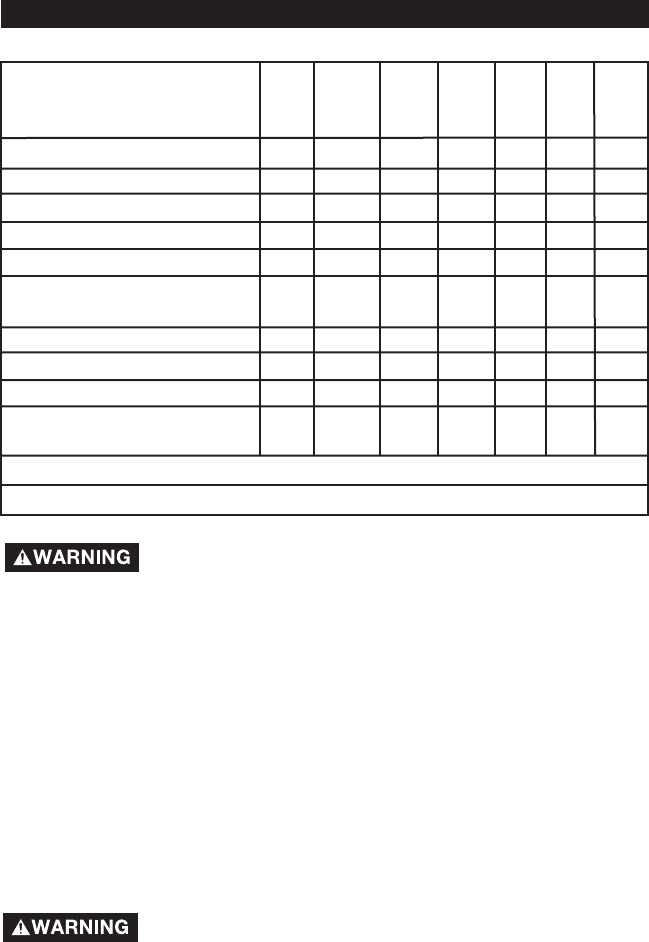
18- ENG
A15256
MAINTENANCE
Customer Responsibilities
Daily
or after
each
use
Before
each
use
●
●
●
●
Every
8
hours
Every
40
hours
Every
100
hours
Yearly
Every
160
hours
●
●
1
1- more frequent in dusty or humid conditions
Check Safety Valve
Drain Tank
Oil Leaks
Check Oil
Change Oil
Air Filter
NOTE: See Operation section for the location of controls.
Unusual Noise and/or
Vibration
Drive Belt-Condition
Motor Pulley/Flywheel alignment
Air compressor pump intake
and exhaust valves
●
●
●
●
●
Head Bolts - Check the torques of the head bolts after the first five hours of operation.
To ensure efficient operation and longer life of the air compressor, a routine
maintenance schedule should be prepared and followed. The above routine
maintenance schedule is geared to an air compressor in a normal working
environment operating on a daily basis. If necessary, the schedule should
be modified to suit the conditions under which your air compressor is used.
The modifications will depend upon the hours of operation and the working
environment. Compressors in an extremely dirty and/or hostile environment will
require a greater frequency of all maintenance checks.
Risk of Unsafe Operation. Unit cycles automatically when
power is on. When servicing, you may be exposed to
voltage sources, compressed air, or moving parts. Before servicing unit
unplug or disconnect electrical supply to the air compressor, bleed tank
of pressure, and allow the air compressor to cool.
To Check Safety Valve
Risk of Bursting.
If the safety valve
does not work properly, over-
pressurization may occur, causing
air tank rupture or an explosion.
1. Before starting compressor, pull
the ring on the safety valve to
make sure that the safety valve
operates freely. If the valve
is stuck or does not operate
smoothly, it must be replaced
with the same type of valve.


















